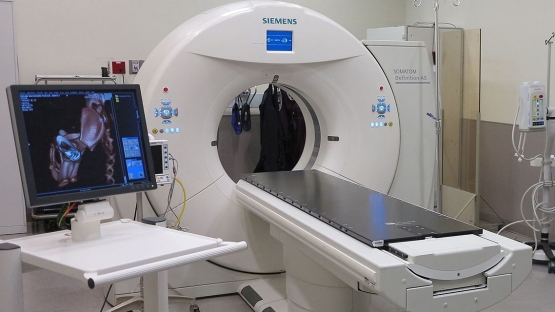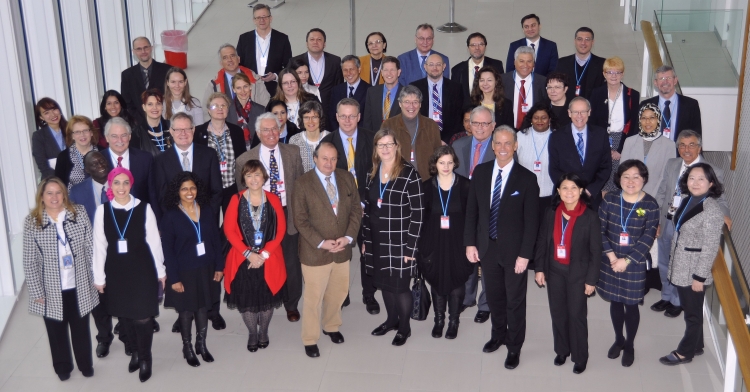Up to 40% of radiological exams may be unnecessary, experts learned at the IAEA Justification of Medical Exposure in Diagnostic Imaging meeting last week. Participants discussed how to further strengthen the criteria for the appropriate use of radiation exposure in medicine.
“The rapid growth of medical radiation has resulted in increased exposure not only for the population as a whole, but also for individual patients,” said Peter Johnston, Director of the IAEA Division of Radiation, Transport and Waste Safety. “Evidence suggests that a significant fraction of these radiological examinations may be unnecessary.”
Diagnostic tools such as computed tomography (CT) are valuable in the diagnosis of many diseases, enabling physicians to identify the best treatment options and subsequently monitor the effectiveness of the therapy.
The focus of last week's meeting, attended by over 50 radiologists, medical physicists and radiation regulators, was to understand the factors that contribute to an unnecessary radiation burden and how this can be countered by implementing clinical imaging guidelines for choosing the best test for a given clinical scenario.
Diagnostic imaging is used increasingly in medicine. An estimated 33 million diagnostic nuclear medicine procedures and 3.6 billion diagnostic radiology procedures were conducted in 2008, the latest year for which figures are available. This advanced technology uses ionizing radiation to identify ailments such as cancer, cardiovascular aliments, communicable and non-communicable diseases. At the same time, concerns exist in the medical and scientific communities that in some cases using ionizing radiation lacks the appropriate justification as risks may outweigh potential benefits to patients.
“With greater access to medical technology, the use of diagnostic imaging such as CT technology needs proper justification,” said Ola Holmberg, Head of the Radiation Protection of Patients Unit at the IAEA. “Clinical imaging guidelines are essential in supporting this decision-making process.”
Sometimes health professionals do not have adequate information about the recommended procedure or alternative medical possibilities, or are unaware about the duplication of examinations and tests, Holmberg said. Lack of experience by radiologists and unnecessary referrals by physicians to protect themselves against the possibility of malpractice liability also contribute to unnecessary medical tests.
Global safety standards contributes to patient care
To strengthen the safety net against unnecessary radiation exposure, internationally recognized guidelines need to be implemented in all countries. “Individual countries should not produce their own guidelines,” said Holmberg. “They need to implement the well-established guidelines developed by the few professional bodies that have the capacity to develop and maintain these, and adopt and adapt them for effective implementation at the national level.”
The IAEA’s International Basic Safety Standards, though not mandatory for Member States, is used as a template for many national regulations to prevent unwanted effects from radiation sources, he added. The International Basic Safety Standards establishes the legal and regulatory foundation for setting up comprehensive systems of protection and safety for all types of radiation exposure situations.
The IAEA assists Member States in understanding the requirements and implementing these standards. Dina Husseini, Assistant Professor of Radiology at the Egypt’s Atomic Energy Authority said: “The IAEA through various workshops has provided useful information that we need to follow to strengthen our health sector and patient care.” In Egypt, the Ministry of Health and research universities have adopted the necessary guidelines to strengthen radiation protection. “These guidelines are part of the educational curricula of our masters and PhD programmes,” she added.
A 2015 IAEA workshop in Cairo on radiation protection was a turning point: it facilitated networking across Africa to share information and experiences that helped protect patients against unnecessary radiation exposure, Husseini said.




